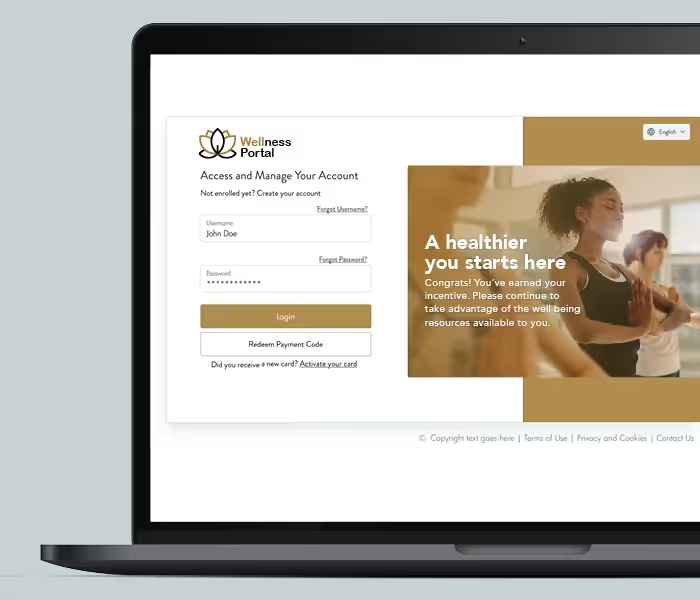The Rise of Push to Debit and What It Means For Your Business
In a 2019 consumer survey, Onbe found that 52% of recipients value speed the most when receiving a payment such as a settlement or contractor payment.

Push-to-Card Transactions Enable Faster Payments
Who doesn't want to be paid faster? In a recent consumer survey, Onbe found that 52% of recipients value speed the most when receiving a payout. As consumer demand for faster transactions increases in domains such as peer-to-peer (P2P) payments, companies need to match this speed when making B2C payments, including disbursements to their customers and workforces.
One payment modality helping to address this challenge is push to debit, otherwise known as push to card. With this payment method, funds are transferred to a personal or business bank account using the recipient's linked debit card. Push transactions are similar to making a debit card payment at the point of sale. The recipient does not have to share sensitive banking information such as account and routing numbers, allowing them to receive transfers conveniently and securely. Because the transaction takes place in near real time, funds are available to spend right away.
Why Send Funds Using Push Transactions?
One of the biggest benefits of push to card payments is the ability to make faster payments. Even as digital payments gain prevalence, corporate payment processes are often slower than recipients would like. Traditional payment methods, such as checks, are time-consuming compared with modern disbursement solutions. Not only does processing the check payment take longer than digital and electronic options, but the payment takes several days to arrive by mail—and the recipient still has to deposit the check and wait for it to clear.
Businesses send a conflicting message when they have adopted faster payment methods to accept funds from consumers but use slower legacy payment methods to compensate their workforce or pay out customer refunds and settlements. Creating a two-way relationship with recipients and earning their loyalty requires meeting their expectations for faster payments and more convenient access to their funds. With push payments and other near real-time options, businesses can modernize their payout processes and enhance the customer experience.
Other benefits of push payments include faster reconciliation, improved cash flow management and a reduced administrative burden. Businesses can also save money by replacing their legacy payment methods with a modern solution. Push payments typically have lower processing fees than traditional options, and for companies with a high transaction volume, the savings can add up quickly.
Use Cases for Push Payments
Push to card payments have wide consumer reach, with over 950 million debit cards in circulation in the U.S. and 30 million in Canada. They are useful in a range of disbursement use cases, from expense reimbursements and contractor compensation to loan disbursements and insurance claims.
Businesses that pay gig workers, freelancers, seasonal contractors, and other nontraditional workforces especially can benefit from offering an immediate compensation option. According to Ernst and Young, $1 trillion accrues daily in employer payroll accounts across developed countries, including the U.S. Releasing this liquidity could improve cash flow for recipients and help address the 20% of employee turnover caused by financial stresses, such as financial shortfalls between paychecks. With push to card, employers can pay outside of typical payroll cycles, making the money transfer in near real time and moving funds to workers' bank accounts as quickly as possible—improving satisfaction and retention.
Offering immediate gig worker payouts not only empowers recipients to access funds quickly—which is true of other electronic and digital payment methods, such as virtual prepaid cards—but also expands recipients' options for spending their earnings. Following a push-to-card transfer, workers can immediately use their funds for savings, investing, bill pay or whatever they choose. This flexibility adds value to every paycheck, helping to build loyalty and even encouraging workers to pick up more shifts.
Push payments also prove useful for consumer-facing payouts such as disaster relief or insurance claims. In an emergency, the slow speed of physical payment methods often doesn't match the urgency of recipients' needs. Providing push payments via the recipient's debit card offers secure and instant access to funds, providing financial relief when it's needed most.
The bottom line: recipients nearly always need or want payments faster than companies are equipped to pay. Push to card offers an easy way to modernize corporate payment processes without high costs or complexity: a win for companies and their workers and customers.
Offering Funds Disbursement Options That Fit Recipients' Lives
Even in today's fast-paced world, offering near real-time payment options is not just about instant gratification. It's about understanding recipients' lives and preferences to design experiences that solve their day-to-day challenges. With the rise of faster payment modalities, businesses now have increasingly simple and cost-effective ways to do just that: empower their most important stakeholders with the immediate access and flexible options they're looking for.
In addition to Push to Debit in U.S. dollars and Canadian dollars, Onbe's corporate disbursement platform allows businesses to disburse funds quickly and seamlessly via virtual cards, ACH (same-day), FX, and more. To learn more about push-to-card transactions and our other modern payment options, contact a payments expert.
Suggested Posts
Talk to a payment expert
Ready to learn more? Let's connect to discuss our payout options.










.avif)
